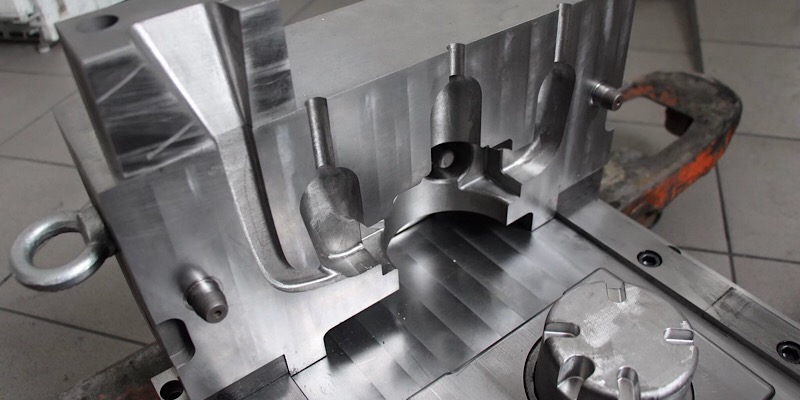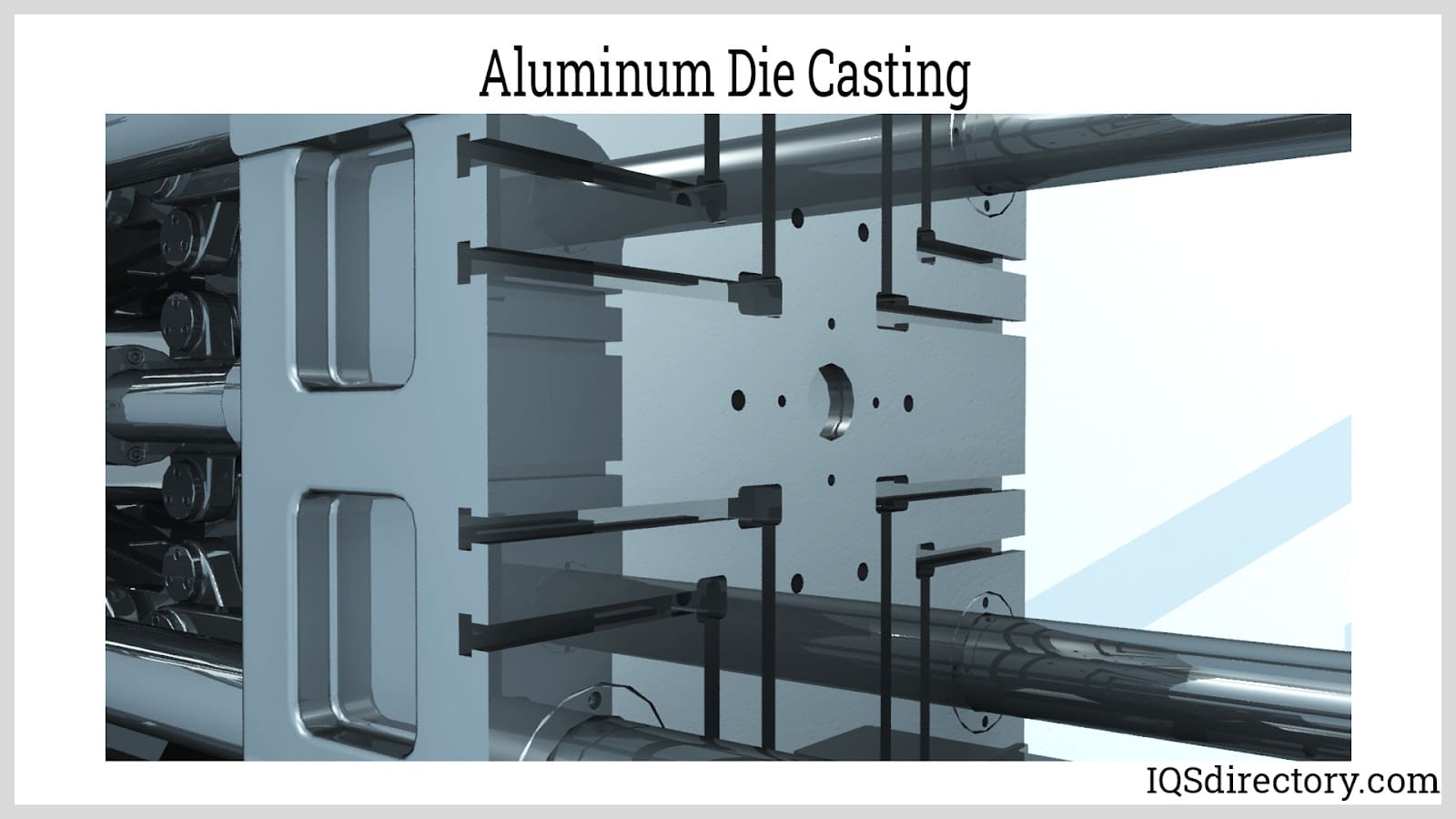Aluminum Foundry Wisconsin is a foundation of casting services
Wiki Article
Exactly How Aluminum Foundry Adds To Developments in Aerospace Design
Aluminum foundries are integral to developments in aerospace engineering. They create light-weight, high-strength elements that are essential for contemporary airplane. Through innovative casting strategies, these factories develop complicated geometries that improve structural honesty. In addition, the development of exceptional Aluminum alloys supports the sector's concentrate on fuel efficiency and sustainability. Nevertheless, challenges continue to be in the production process. Understanding these elements reveals the extensive impact of Aluminum on aeronautics's future.The Value of Lightweight Products in Aerospace Layout
As the aerospace sector remains to evolve, the value of light-weight products ends up being significantly noticeable. The demand for performance and sustainability drives designers to focus on making use of products that lower total weight without compromising structural integrity. Light-weight materials, specifically Aluminum, play a crucial function in boosting fuel efficiency, improving payload ability, and increasing the overall performance of aircraft.The combination of these materials allows for cutting-edge designs, enabling makers to create even more aerodynamic shapes that can withstand severe problems. The reduction in weight not just lowers functional costs however additionally adds to a reduced ecological footprint, lining up with international efforts towards sustainability in aviation.
Advanced Casting Techniques in Aluminum Foundries
Advanced spreading strategies in Aluminum shops play a crucial duty in aerospace engineering by enabling the manufacturing of accurate and lightweight parts. Advancements in mold design and accuracy spreading processes are crucial in achieving suitable performance and architectural stability. Additionally, the advancement of lightweight alloys enhances the total efficiency and performance of aerospace applications.Innovative Mold Style
Cutting-edge mold and mildew style plays an essential role in the effectiveness and efficiency of Aluminum factories, especially within the aerospace field. By leveraging sophisticated materials and methods, modern mold and mildews can be crafted to stand up to high temperatures and stress, making sure peak performance throughout the spreading process. These layouts typically include complex geometries that permit for the production of lightweight yet structurally audio parts, vital for aerospace applications. In addition, using computer-aided layout (CAD) software facilitates accurate modeling, enabling shops to improve and mimic mold styles prior to physical manufacturing begins. This not just enhances the high quality of cast components yet likewise lowers waste and preparation, bring about considerable expense financial savings. Overall, innovative mold layout is a keystone of progress in Aluminum Foundry innovation for aerospace design.Accuracy Casting Procedures
The effectiveness of ingenious mold and mildew layouts flawlessly incorporates with accuracy casting processes, which are vital for creating high-quality Aluminum components in aerospace design. These processes, consisting of sand casting, die casting, and investment casting, guarantee the creation of intricate geometries with limited tolerances. Advanced techniques like vacuum casting and stress pass away casting improve the stability and surface finish of the end products. Precision casting minimizes product waste while optimizing the mechanical residential or commercial properties of Aluminum, crucial for aerospace applications. On top of that, using real-time monitoring and progressed simulation tools throughout the spreading process enables for instant adjustments, leading to improved top quality control. Jointly, these accuracy casting processes setting Aluminum factories at the forefront of aerospace technology, sustaining the industry's need for integrity and efficiency.Light-weight Alloy Advancement
As aerospace designers seek to enhance gas effectiveness and performance, light-weight alloy development comes to be a crucial focus in Aluminum factories. These factories utilize sophisticated spreading methods to create alloys that supply superior strength-to-weight proportions. Technologies in alloy structure, including the incorporation of elements like lithium and magnesium, enable the manufacturing of products that stand up to severe problems while decreasing overall airplane weight. Strategies such as die casting and financial investment spreading help with the precision manufacturing of complicated forms, which are critical for aerospace applications. Additionally, continuous study intends to optimize these alloys for enhanced mechanical buildings and boosted sturdiness. By prioritizing light-weight alloy advancement, Aluminum factories greatly add to the development of aerospace engineering, paving the way for much more effective and lasting airplane designs.
Enhancing Structural Integrity Through Aluminum Components
Aluminum parts use considerable benefits in improving structural honesty within aerospace engineering. Their light-weight nature adds to total effectiveness while keeping toughness, which is necessary for aircraft performance. In addition, the anxiety resistance properties of Aluminum aid ensure the longevity and dependability of aerospace structures under numerous functional conditions.
Light-weight Material Perks
While conventional products usually compromise weight for toughness, using Aluminum parts in aerospace design uses substantial benefits in architectural integrity. Aluminum's light-weight nature adds to overall design performance, permitting more streamlined airplane that consume less fuel, consequently improving sustainability. The material's superb strength-to-weight proportion warranties that components keep resilience without adding unnecessary mass. This high quality promotes boosted efficiency and agility in trip, in addition to enhanced payload capacities. In addition, Aluminum's resistance to corrosion lengthens the lifespan of aerospace frameworks, reducing maintenance prices and enhancing safety and security. As suppliers increasingly embrace Aluminum alloys, the aerospace sector experiences a transformative change towards a lot more efficient and reliable design solutions that focus on both efficiency and ecological responsibility.Anxiety Resistance Residences
Different materials possess special buildings, Aluminum's extraordinary tension resistance stands out as a vital aspect in boosting the structural stability of aerospace elements. This resistance plays a crucial duty in making certain that aircraft can stand up to various functional stress and anxieties, including tiredness, influence, and ecological problems. Aluminum alloys, especially engineered for aerospace applications, show high tensile stamina while preserving light-weight attributes, allowing engineers to design more reliable structures - Aluminum Foundry. Furthermore, the capability of Aluminum to withstand cyclic loading without considerable deformation adds to the longevity and reliability of aerospace components. As improvements continue in Aluminum Foundry methods, the development of stress-resistant Aluminum components assures more improvements in efficiency, security, and effectiveness across the aerospace sector, solidifying Aluminum's duty as a preferred product in modern designGas Effectiveness Improvements Driven by Aluminum Innovations
As the aerospace market looks for to enhance gas performance, innovative uses Aluminum have emerged as a necessary solution. Aluminum's light-weight nature notably lowers aircraft weight, permitting for reduced gas intake throughout flight. This decrease in weight is important, as even tiny declines can result in significant enhancements in total fuel economic situation.Advanced Aluminum alloys, made for boosted toughness and sturdiness, enable manufacturers to develop elements that maintain architectural stability while reducing mass - Aluminum Foundry. Furthermore, the integration of Aluminum in airframes and engine parts helps with improved the rules of her explanation aerodynamics, adding to reduced drag and enhanced performance
The fostering of Aluminum in aerospace not only satisfies the need for fuel-efficient style yet likewise straightens with regulatory stress for lower exhausts. As these advancements remain to develop, they play a significant function in establishing new benchmarks for fuel efficiency, ensuring that the aerospace market can fulfill expanding financial and ecological challenges.

The Role of Aluminum in Sustainable Air Travel Practices
The increasing emphasis on sustainable air travel techniques has positioned Aluminum as a vital material in the quest for greener aircraft design. Known for its light-weight residential or commercial properties, Aluminum considerably reduces aircraft weight, causing reduced gas intake and emissions. Its recyclability even more enhances its sustainability profile, as Aluminum can be reused forever without loss of high quality. This characteristic sustains a circular economic climate within the air travel field, minimizing waste and resource exhaustion.Furthermore, improvements in Aluminum alloys have enhanced their toughness and rust resistance, enabling longer life span and reduced upkeep demands. These developments promote the development of a lot more effective aircraft frameworks, contributing to total sustainability efforts. Additionally, Aluminum's thermal conductivity plays a vital function in energy-efficient layouts, boosting systems such as warm exchangers. Jointly, these characteristics highlight Aluminum's critical function in advancing sustainable air travel, lining up with worldwide initiatives focused on lowering the ecological impact of air travel.
Difficulties Faced by Aluminum Foundries in Aerospace Manufacturing
While Aluminum foundries play an essential duty in aerospace manufacturing, they face significant challenges that can impact manufacturing efficiency and high quality. One major challenge is the strict quality assurance standards needed in the aerospace sector. Any kind of problem can endanger safety and security and performance, necessitating rigorous evaluation procedures that extend manufacturing timelines. Furthermore, shops typically contend with fluctuating resources expenses, which can impact prices and profitability. The complexity of Aluminum alloys made use of in aerospace applications further makes complex the production procedure, as precise solutions are important for attaining desired mechanical properties. Skilled labor shortages prevent the capacity to preserve top notch production degrees. Ultimately, environmental regulations enforce constraints on emissions and waste management, requiring shops to buy sustainable practices, which can be cost-prohibitive. These factors jointly produce a landscape where Aluminum shops have to continually adjust to meet the advancing needs of aerospace manufacturing while making certain safety and security and conformity.Future Trends in Aluminum Applications for Aerospace Design
With innovations in innovation and enhancing demands for effectiveness, the future of Aluminum original site applications in aerospace design is poised for substantial improvement. The assimilation of ingenious Aluminum alloys and composites is anticipated to boost strength-to-weight proportions, resulting in more fuel-efficient airplane styles. Additionally, improvements in additive manufacturing strategies will permit the manufacturing of complicated Aluminum frameworks that were formerly impossible, maximizing efficiency and minimizing waste.
Sustainable methods will certainly play an important function, with a growing emphasis on reusing Aluminum to decrease environmental impact. The aerospace industry is likely to welcome smarter making procedures, such as automation and man-made intelligence, guaranteeing better and accuracy in Aluminum elements. Partnerships between Aluminum factories and aerospace companies will promote research study and development, leading the method for brand-new applications that fulfill the strict demands of contemporary aerospace engineering. Overall, the future looks assuring for Aluminum's duty fit the skies
Frequently Asked Inquiries
What Are the Environmental Influences of Aluminum Manufacturing in Aerospace?
The ecological influences of Aluminum manufacturing in aerospace include considerable energy consumption, greenhouse gas emissions, and habitat interruption. Furthermore, mining procedures can result in soil deterioration and water contamination, elevating worries concerning sustainability and environmental equilibrium.Exactly How Does Aluminum Contrast to Other Materials in Aerospace Applications?
Aluminum offers a distinct combination of lightweight residential properties, deterioration resistance, and cost-effectiveness contrasted to other materials. Its high strength-to-weight ratio makes it specifically advantageous for aerospace applications, improving fuel performance and total performance in airplane style.What Qualifications Do Aluminum Foundry Workers Requirement for Aerospace Projects?
Aluminum Foundry employees require specific training in metallurgy and spreading methods, along with knowledge of aerospace industry criteria. Accreditations in high quality control and security protocols are additionally important to ensure conformity with strict aerospace project requirements.Exist Any Type Of Safety Worry About Using Aluminum in Aerospace Engineering?
Safety and security worries relating to Aluminum in aerospace design consist of vulnerability to stress and anxiety, tiredness, and corrosion fractures. Proper therapy and alloy option are necessary to alleviate these risks, guaranteeing structural integrity and overall safety and security in aerospace applications.How Does Aluminum Recycling Advantage the Aerospace Market?
Aluminum recycling substantially profits the aerospace market by decreasing product prices, minimizing ecological impact, and preserving power. This sustainable practice enhances the market's effectiveness click this link while advertising using lightweight, high-performance components in airplane production.Advanced spreading methods in Aluminum factories play an essential role in aerospace engineering by allowing the production of light-weight and exact components. Ingenious mold and mildew style plays a vital duty in the effectiveness and effectiveness of Aluminum shops, especially within the aerospace industry. As aerospace designers look for to enhance fuel performance and efficiency, light-weight alloy development comes to be a necessary focus in Aluminum factories. Aluminum alloys, especially crafted for aerospace applications, exhibit high tensile toughness while preserving light-weight features, making it possible for engineers to develop more effective structures. Cooperations in between Aluminum factories and aerospace business will certainly foster research study and development, leading the method for brand-new applications that satisfy the strict requirements of contemporary aerospace design.
Report this wiki page